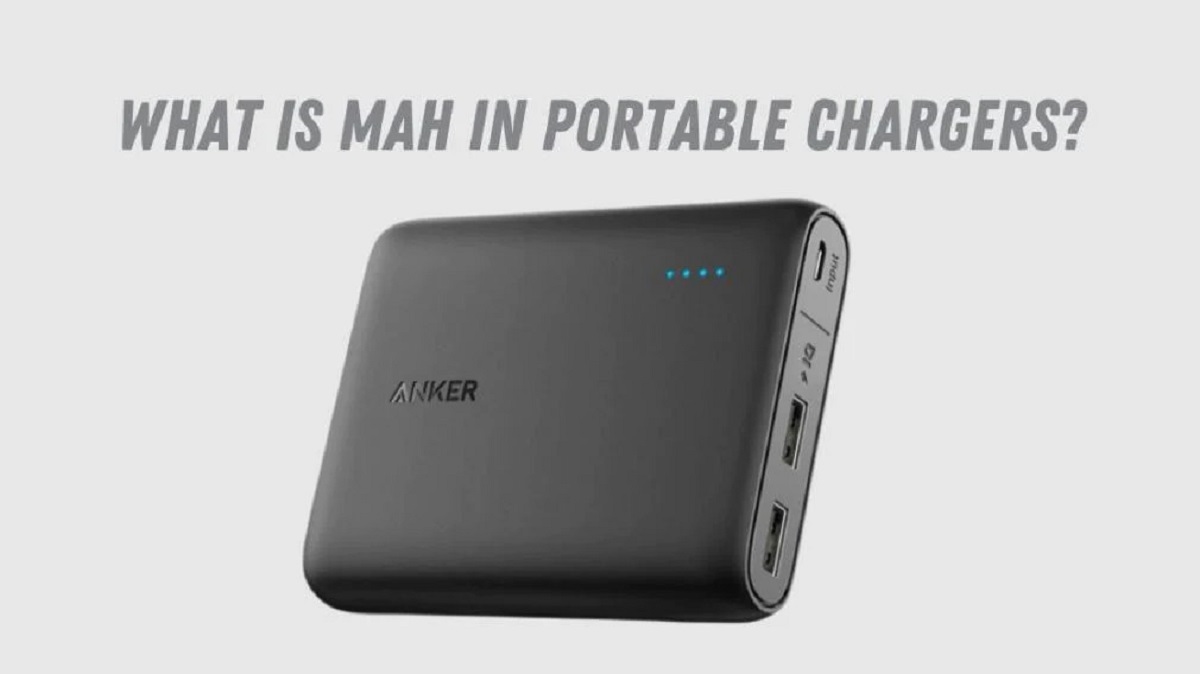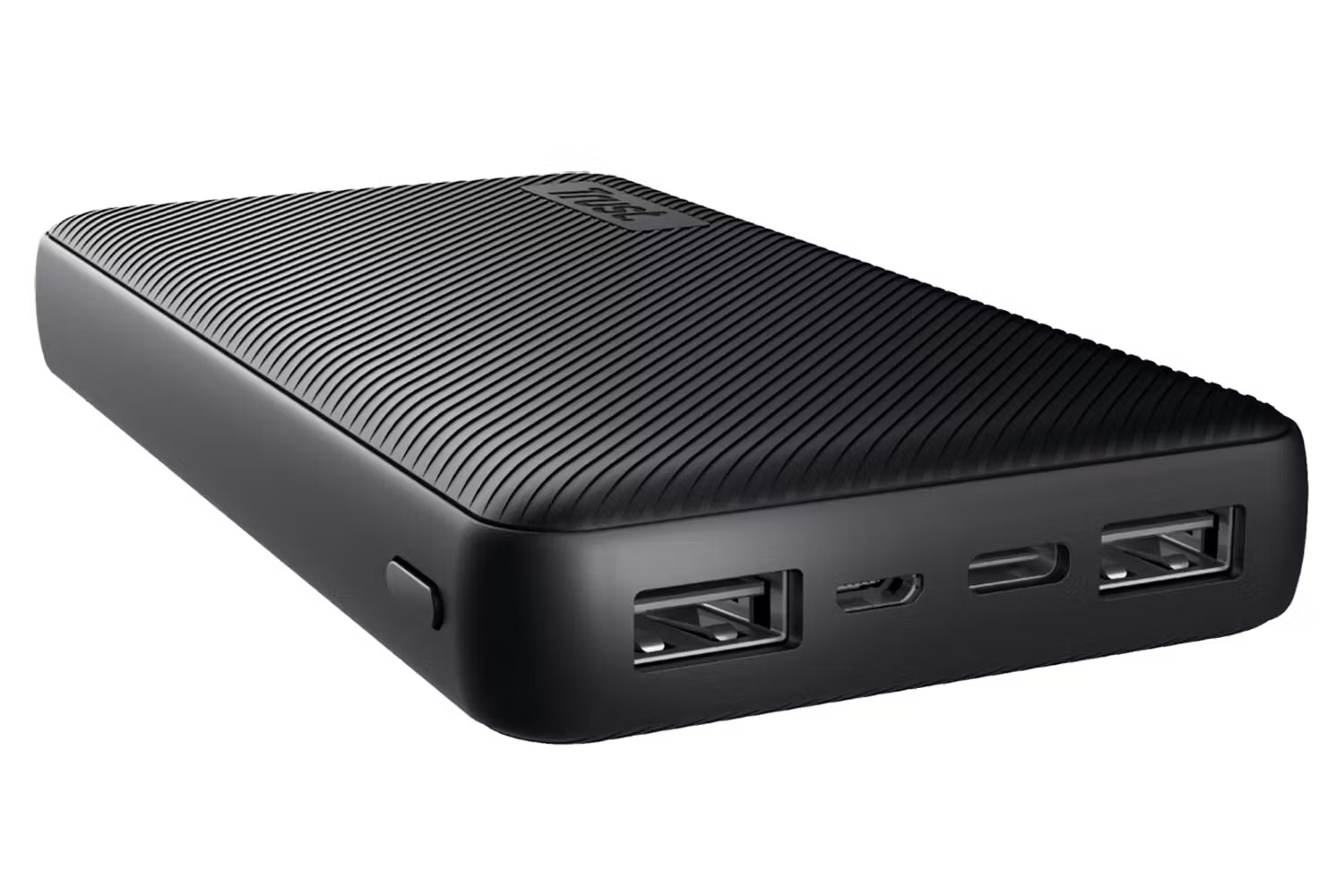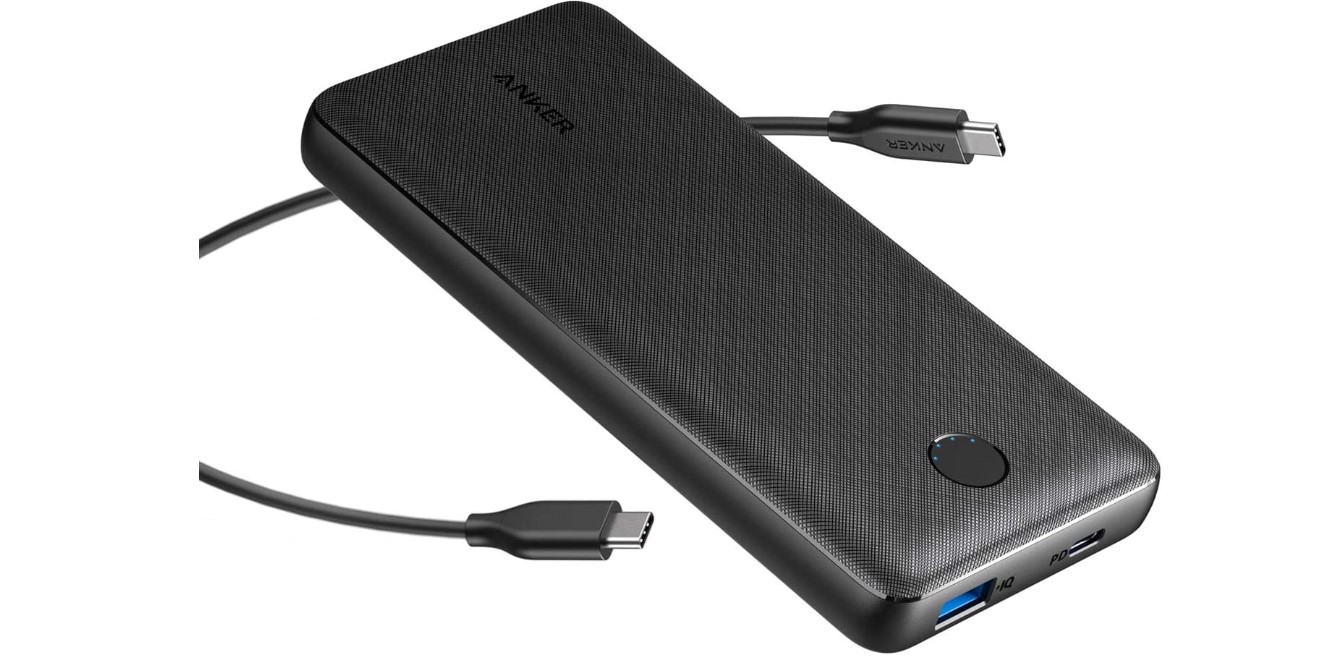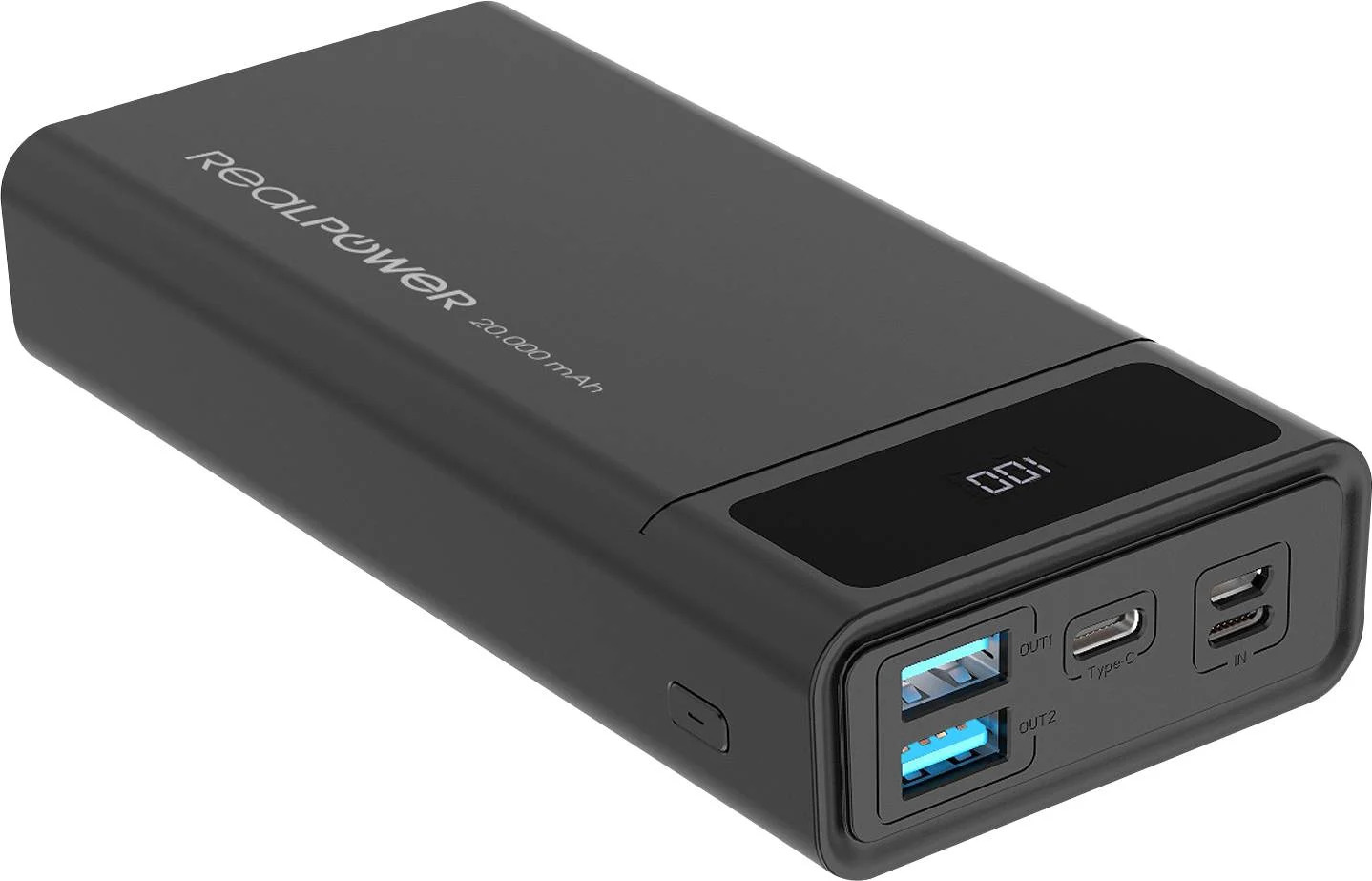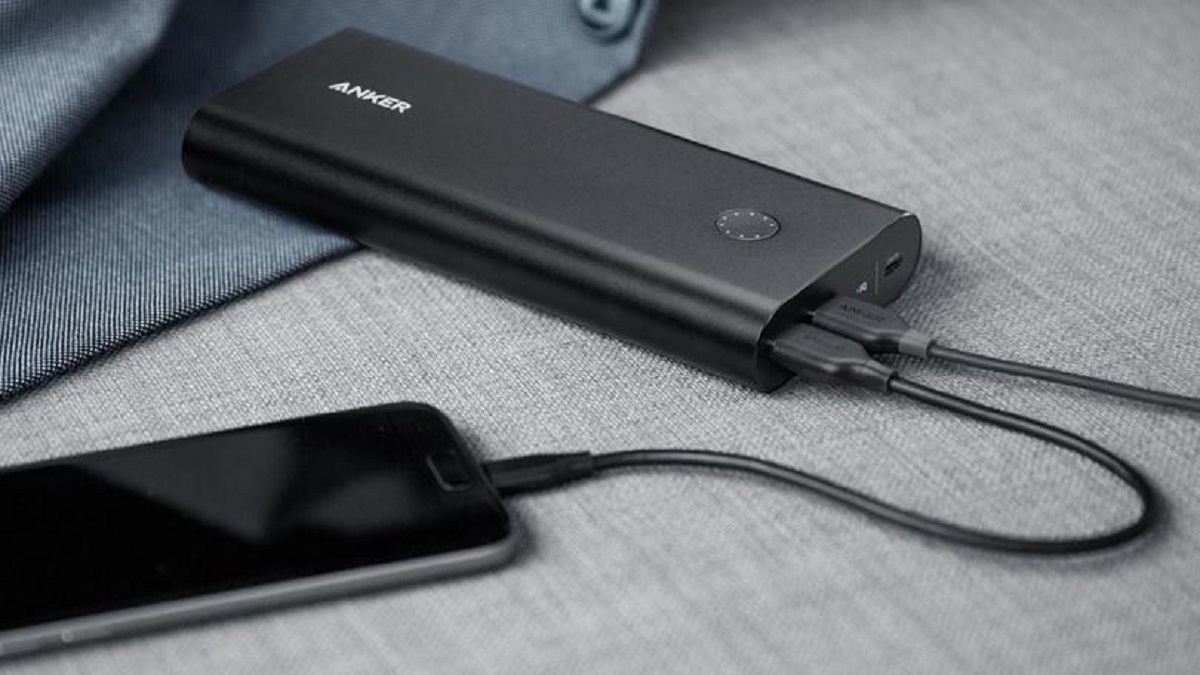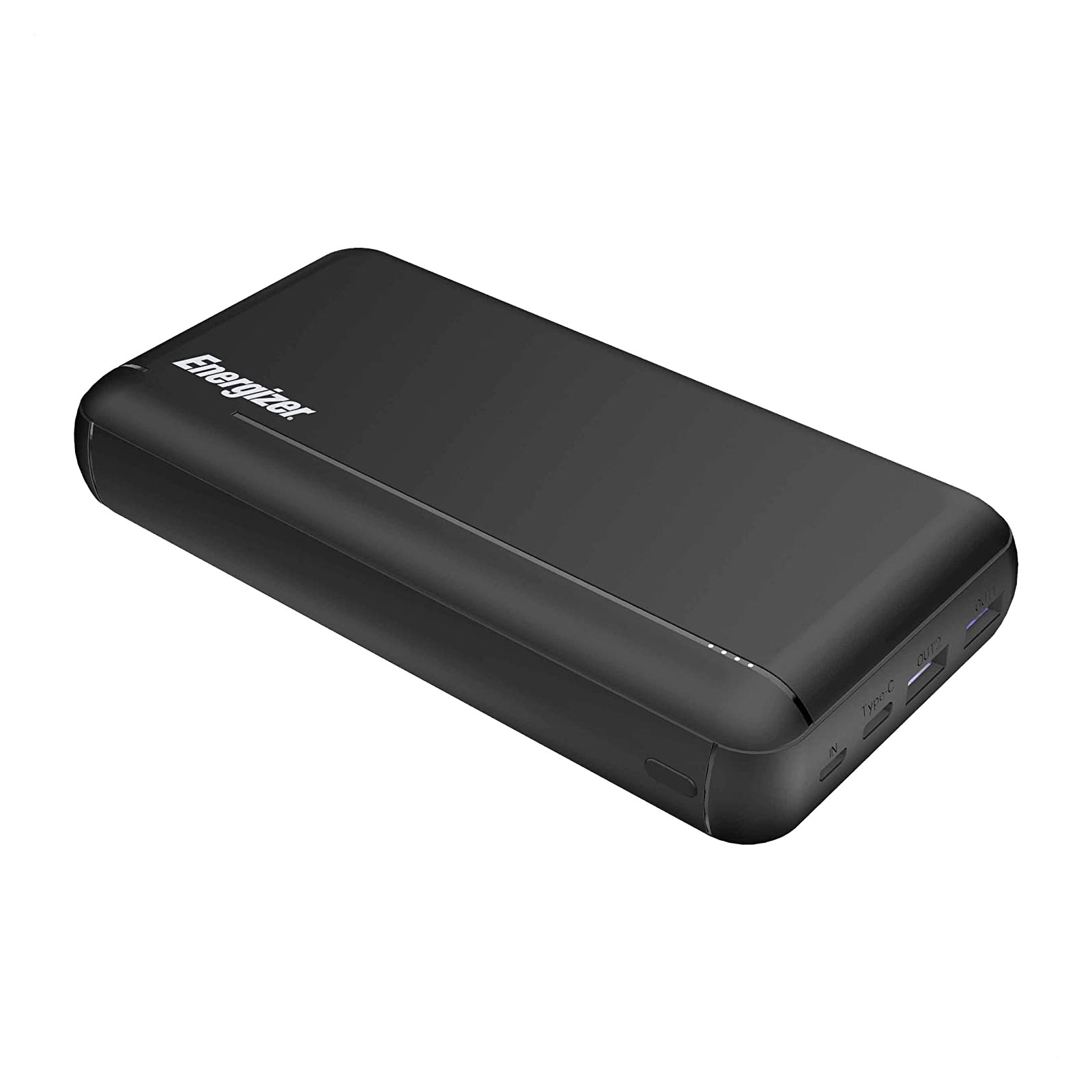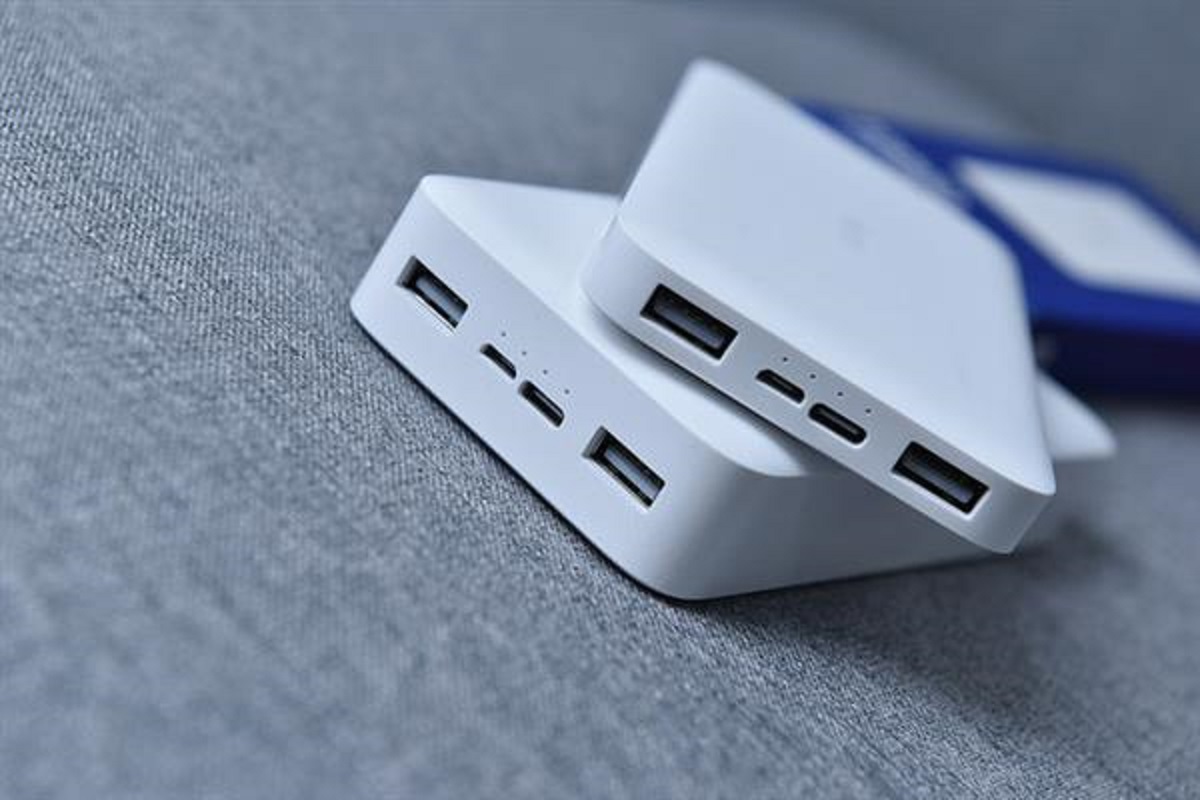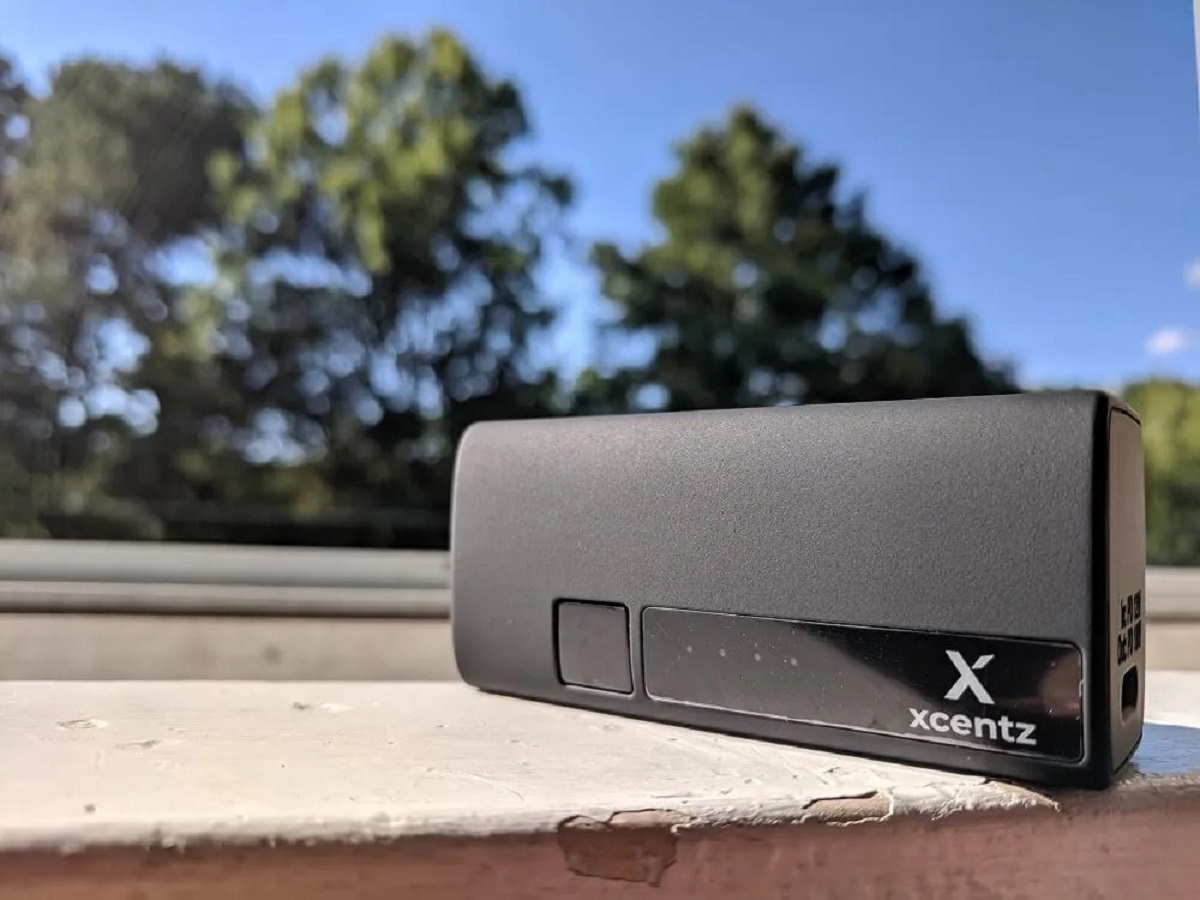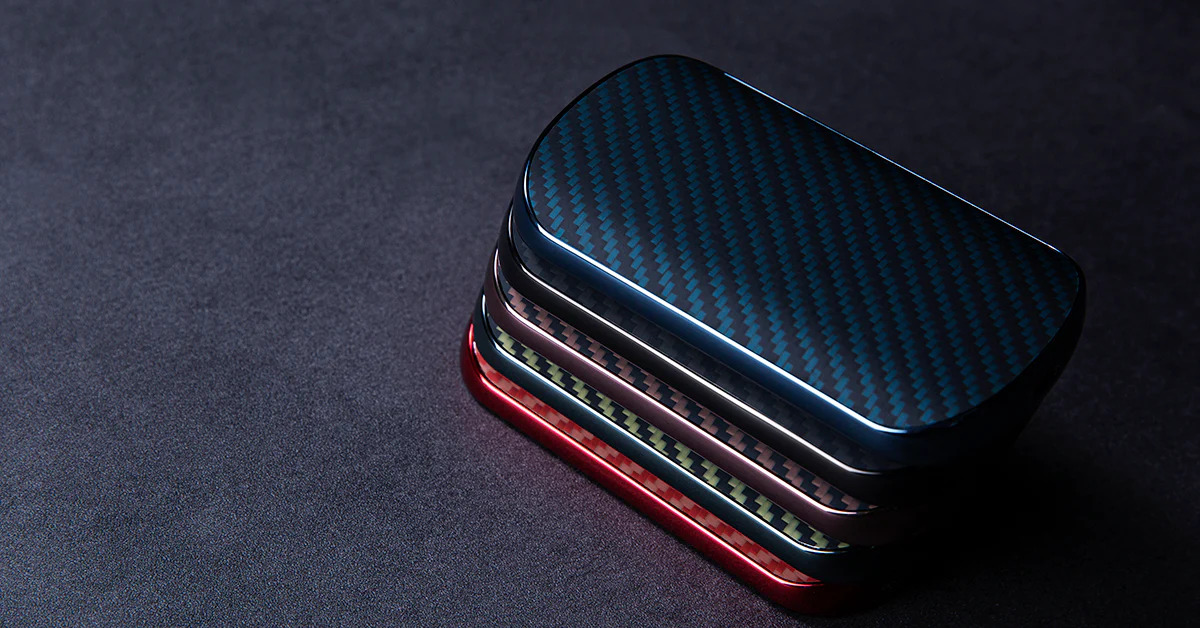Introduction
Welcome to the world of portable power! In today’s fast-paced and tech-savvy era, staying connected is more important than ever. Whether you’re traveling, working on-the-go, or simply enjoying some outdoor adventures, having a reliable power source is crucial. That’s where power banks come in. These portable chargers provide a convenient way to keep your devices juiced up when you don’t have access to a traditional power outlet.
But before you dive into the realm of power banks, it’s essential to understand one key term: mAh. This abbreviation stands for milliampere-hour, and it plays a vital role in determining the capacity and performance of a power bank.
So, what exactly is mAh? It’s a unit of measurement that refers to the amount of electric charge a battery can hold. In simple terms, the higher the mAh rating, the more power the power bank can store and deliver to your devices.
When it comes to power banks, mAh is a crucial specification to consider. It directly impacts how many times you can recharge your device or how long the power bank will last before it needs recharging. Understanding the concept of mAh will help you choose the right power bank that fits your needs.
In this article, we will delve deeper into the world of mAh and its relationship to power banks. We will explore factors that affect power bank capacity, tips for maximizing mAh, and ultimately, empower you to make an informed decision when selecting a power bank.
What is mAh?
Before we dive into the specifics of mAh and its role in power banks, let’s break down the term. mAh stands for milliampere-hour, a unit of measurement for electric charge. It represents the amount of electrical capacity a battery can store. Essentially, it tells you how much power the battery can deliver and for how long.
To give you an analogy, think of mAh as the fuel tank of a car. Just as a larger fuel tank can store more fuel and allow you to travel longer distances, a higher mAh rating indicates that a power bank can store more electricity and provide more charging capacity.
Every electronic device, such as smartphones, tablets, and cameras, requires a certain amount of electrical energy to function. This energy is measured in milliampere-hours (mAh). For example, an average smartphone may have a battery capacity of around 3,000mAh to 4,000mAh.
When you use a power bank to charge your device, the power bank transfers its stored energy (measured in mAh) to your device’s battery, replenishing its charge. The capacity of the power bank determines how many times it can charge your device before it runs out of power.
Now, let’s take an example. Suppose you have a power bank with a capacity of 10,000mAh and a smartphone with a battery capacity of 3,500mAh. In theory, this power bank can provide approximately two to three full charges for your smartphone (10,000mAh divided by 3,500mAh). However, keep in mind that the actual number of charges may vary due to various factors we will discuss later.
It’s important to note that mAh alone does not indicate the charging speed. The charging speed is determined by the output current (measured in amps) of the power bank and the charging capability of your device. A power bank with a higher output current can charge your device faster, provided that your device supports higher charging speeds.
Now that you have a basic understanding of what mAh represents, let’s explore how mAh relates to power banks and why it’s important to consider when selecting one.
How does mAh relate to power banks?
When it comes to power banks, mAh serves as a crucial determinant of their capacity and performance. The higher the mAh rating of a power bank, the more electrical charge it can store, and the longer it can provide power to your devices.
Power banks come in various capacities, ranging from a few thousand mAh to tens of thousands of mAh. The capacity of a power bank determines how many times it can recharge your device or how long it can sustain power delivery before it needs recharging itself.
Let’s take an example to illustrate the relationship between mAh and power bank capacity. Suppose you have two power banks, one with a capacity of 5,000mAh and another with a capacity of 10,000mAh. The power bank with a capacity of 10,000mAh can theoretically provide twice as much power as the one with 5,000mAh, assuming all other factors remain constant.
However, it’s important to note that the actual number of charges a power bank can provide may vary due to factors such as the efficiency of the power bank’s conversion circuitry, the charging efficiency of your device, and even external conditions like temperature.
Furthermore, it’s worth mentioning that power banks usually have energy losses during charging and discharging. These losses occur due to conversion inefficiencies and power dissipation. As a result, the actual usable capacity of a power bank may be slightly lower than the advertised capacity.
When selecting a power bank, it’s essential to consider your specific needs. If you frequently rely on multiple devices or have higher power demands, opting for a power bank with a higher mAh rating will provide more charging cycles and longer-lasting power.
On the other hand, if you primarily use smaller devices with lower power requirements, a power bank with a lower mAh rating may be sufficient and offer a more compact and portable solution.
Understanding how mAh relates to power banks empowers you to make an informed decision based on your usage patterns and requirements. In the next section, we will explore factors that can affect power bank capacity, giving you a deeper understanding of the performance and limitations of these portable chargers.
Understanding the capacity of power banks
Power bank capacity refers to the amount of electrical charge it can store and deliver to your devices. It is typically measured in milliampere-hours (mAh) and serves as a key specification to consider when choosing a power bank. Understanding power bank capacity is crucial in determining how many times it can charge your device or how long it can provide power.
However, it’s important to note that the actual usable capacity of a power bank may be lower than the advertised capacity. This is due to energy losses during the charging and discharging process, as well as other factors such as conversion inefficiencies and power dissipation.
When selecting a power bank, it’s crucial to assess your specific power needs. Consider the capacity of the devices you intend to charge and how frequently you will use the power bank. If you have larger devices with higher power requirements, such as tablets or laptops, it’s advisable to choose a power bank with a higher capacity, usually ranging from 10,000mAh to 20,000mAh or more.
For smaller devices like smartphones or smartwatches, a power bank with a lower capacity, around 5,000mAh to 10,000mAh, may suffice. It’s important to note that power banks with higher capacities are typically larger and heavier, so you’ll need to strike a balance between capacity and portability based on your specific needs.
It’s worth mentioning that the number of charges a power bank can provide will also depend on the efficiency of the device’s battery and the charging circuitry. Some devices may have higher energy losses during charging, resulting in fewer charges from a power bank.
Additionally, factors such as temperature can affect the performance and efficiency of a power bank. Extreme temperatures, both high and low, can reduce the capacity and overall lifespan of the power bank. It’s advisable to store and use your power bank within the recommended temperature range specified by the manufacturer.
It’s important to conduct thorough research and read user reviews when selecting a power bank. This will provide insight into the actual performance and reliability of different brands and models. Additionally, consider factors such as the output current and charging speed of the power bank, as these can also impact your charging experience.
Understanding the capacity of power banks ensures that you make an informed decision when selecting a portable charger. In the following section, we will explore various factors that can affect power bank capacity, allowing you to maximize its performance and efficiency.
Factors affecting power bank capacity
While power bank capacity is a crucial factor in determining its performance, various factors can affect its actual capacity and overall efficiency. Understanding these factors will help you get the most out of your power bank and make informed decisions when selecting one. Let’s explore some of the key factors that can impact power bank capacity:
- Conversion efficiency: Power banks have internal circuitry that converts the stored energy to the appropriate voltage and current for charging your devices. However, this conversion process is not 100% efficient, resulting in power loss and reduced usable capacity. Higher-quality power banks tend to have better conversion efficiency, translating to less energy loss and higher effective capacity.
- Internal resistance: Power banks have internal resistance that can cause energy losses and reduce the effective capacity. Higher-quality power banks typically have lower internal resistance, leading to better performance and higher usable capacity.
- Charging cable quality: The quality of the cable used to charge your devices can also affect the overall efficiency and charging speed. Low-quality or damaged cables can result in power loss and slower charging, diminishing the effective capacity of the power bank.
- Device compatibility and charging speed: Different devices have varying charging requirements and capabilities. Some devices may draw more power, leading to faster battery depletion and reduced charging cycles from a power bank. Additionally, certain devices may not be compatible with high-speed charging, limiting the charging speed and affecting the effective capacity.
- Operating temperature: Extreme temperatures, both hot and cold, can impact the performance and efficiency of a power bank. High temperatures can accelerate internal chemical reactions, leading to energy loss and reduced capacity. On the other hand, cold temperatures can increase internal resistance and decrease the efficiency of the power bank.
- Aging and usage: Over time, power banks may experience degradation in performance and capacity due to regular usage and aging of internal components. It’s essential to follow proper usage and maintenance guidelines specified by the manufacturer to prolong the lifespan and retain the capacity of the power bank.
By considering these factors, you can choose a power bank that aligns with your needs and optimize its performance to maximize the effective capacity. In the next section, we will provide tips for maximizing power bank capacity, ensuring you get the most out of your portable charger.
Choosing the right mAh for your needs
When it comes to selecting a power bank, choosing the right mAh rating is important to ensure it meets your specific power requirements. Considering factors such as the devices you plan to charge, the frequency of use, and your desired level of portability will help you determine the ideal mAh for your needs.
If you mainly rely on smaller devices like smartphones or smartwatches, a power bank with a lower mAh rating, such as 5,000mAh to 10,000mAh, may be suitable. These power banks are generally more compact and lightweight, making them convenient for everyday use or when you’re on the go.
However, if you have larger devices with higher power demands, such as tablets or laptops, opting for a power bank with a higher mAh rating is recommended. Power banks in the range of 10,000mAh to 20,000mAh or even higher can provide multiple charges for larger devices, ensuring you stay powered up during extended periods without access to a power outlet.
It’s important to note that the actual number of charges you can obtain from a power bank may vary due to factors like energy losses during conversion, device efficiency, and other external conditions. To get a more accurate estimate of how many charges a power bank can provide, consider the specific mAh capacity of your device’s battery and the average efficiency of the power bank you’re considering.
Moreover, it’s advisable to think about your usage patterns and scenarios. If you frequently travel or engage in outdoor activities where power sources are limited, opting for a higher mAh rating can provide peace of mind knowing you have enough power to keep your devices running for an extended period.
Lastly, it’s worth mentioning that while higher mAh ratings offer more charging capacity, they also result in larger and heavier power banks. Consider the trade-off between capacity and portability to ensure the power bank you choose meets both your power needs and convenience preferences.
By considering the devices you intend to charge, frequency of use, desired level of portability, and specific usage scenarios, you can choose the right mAh rating that aligns with your needs and ensures you have sufficient power whenever and wherever you need it.
Tips for maximizing power bank capacity
To make the most out of your power bank and maximize its capacity, here are some useful tips to consider:
- Choose an efficient power bank: Look for power banks with higher conversion efficiency and lower internal resistance. These factors contribute to better performance and reduced energy loss, resulting in maximizing the effective capacity.
- Use high-quality charging cables: Opt for quality cables that have thick wiring and good insulation. High-quality cables help minimize power loss during charging and ensure efficient energy transfer, maximizing the power bank’s capacity.
- Charge your power bank fully before use: Before relying on your power bank, make sure to charge it fully. This will ensure you get the maximum available capacity when you need it the most.
- Charge devices when needed: Avoid unnecessarily draining the power bank by charging your devices only when necessary. Regularly charging your devices to full and draining the power bank to empty can decrease its overall lifespan and capacity.
- Avoid exposing the power bank to extreme temperatures: High temperatures can reduce the capacity and performance of the power bank, while cold temperatures can increase internal resistance. Store and use the power bank within the recommended temperature range specified by the manufacturer.
- Disconnect devices once fully charged: Once your devices are fully charged, disconnect them from the power bank to prevent unnecessary power consumption and preserve the power bank’s capacity.
- Keep the power bank clean and free from debris: Dust and debris can affect the performance and efficiency of the power bank. Regularly clean the power bank’s ports and surfaces to ensure optimal energy transfer and maximize capacity.
- Follow manufacturer guidelines: Read and adhere to the manufacturer’s guidelines for proper usage, storage, and maintenance of the power bank. This will help extend its lifespan and maintain its capacity over time.
By implementing these tips, you can optimize the performance and capacity of your power bank, ensuring you have reliable power whenever you need it. Remember, taking proper care of your power bank will not only maximize its capacity but also prolong its lifespan.
Conclusion
Power banks have become an essential accessory for our increasingly mobile lifestyles. Understanding the concept of mAh and its relationship to power bank capacity is crucial for selecting the right portable charger that meets your needs.
mAh, which stands for milliampere-hour, represents the amount of electrical charge a battery can store. When it comes to power banks, higher mAh ratings indicate larger capacity, allowing for more charging cycles or longer-lasting power.
Factors such as conversion efficiency, internal resistance, charging cable quality, device compatibility, operating temperature, and usage patterns can affect the actual capacity and efficiency of a power bank. By considering these factors and choosing a power bank with an appropriate mAh rating, you can ensure you have enough power to keep your devices charged while on the go.
To maximize the capacity of your power bank, follow some helpful tips like choosing an efficient power bank, using high-quality charging cables, fully charging and disconnecting devices as needed, avoiding extreme temperatures, and following manufacturer guidelines for usage and maintenance.
By understanding mAh, considering your power needs, and implementing these tips, you can make the most of your power bank and have a reliable source of power wherever your adventures take you.
So, go ahead and embark on your journeys without worrying about running out of battery. With the right power bank and a solid understanding of mAh, you can stay connected, powered up, and ready for anything.







